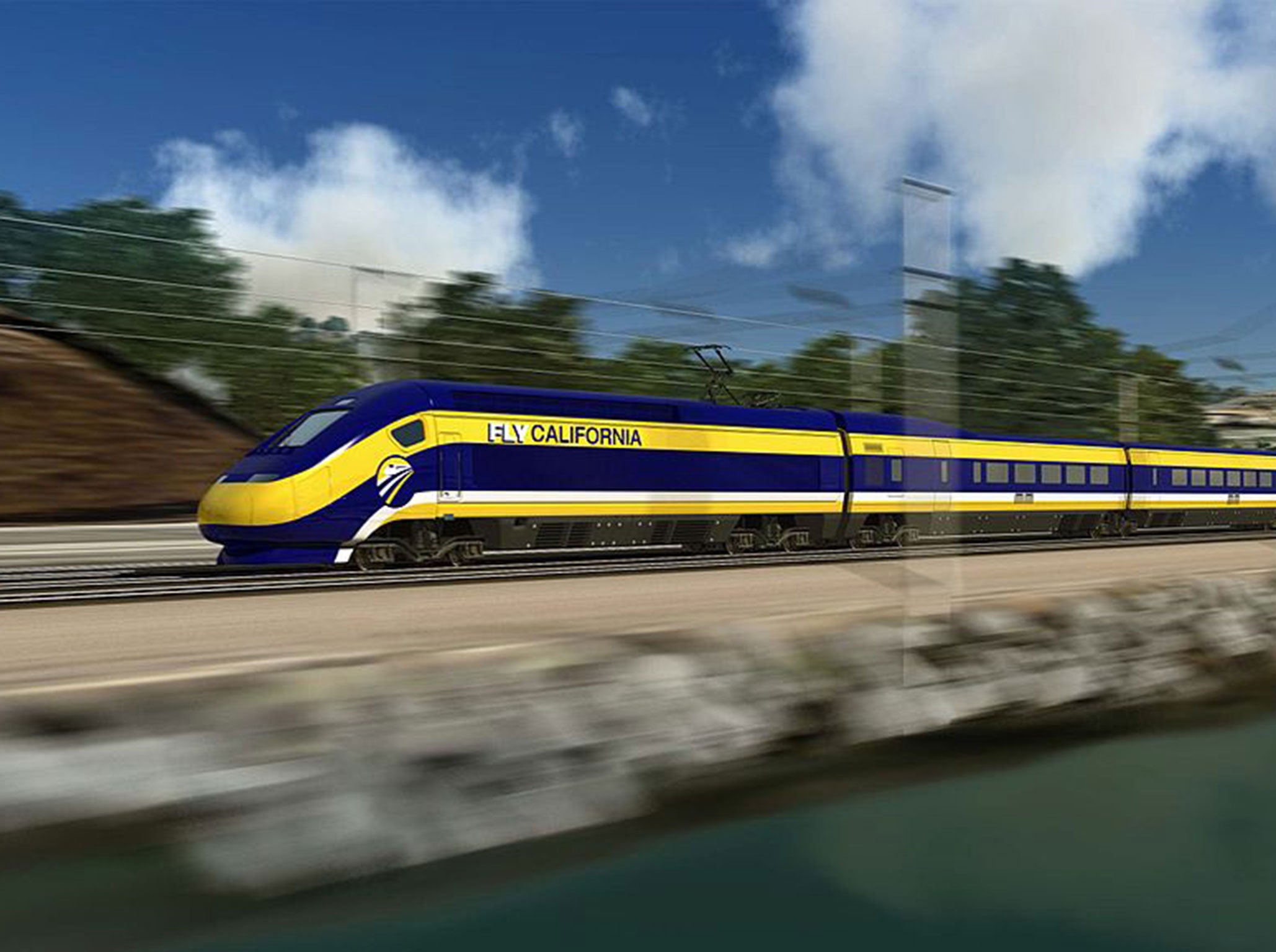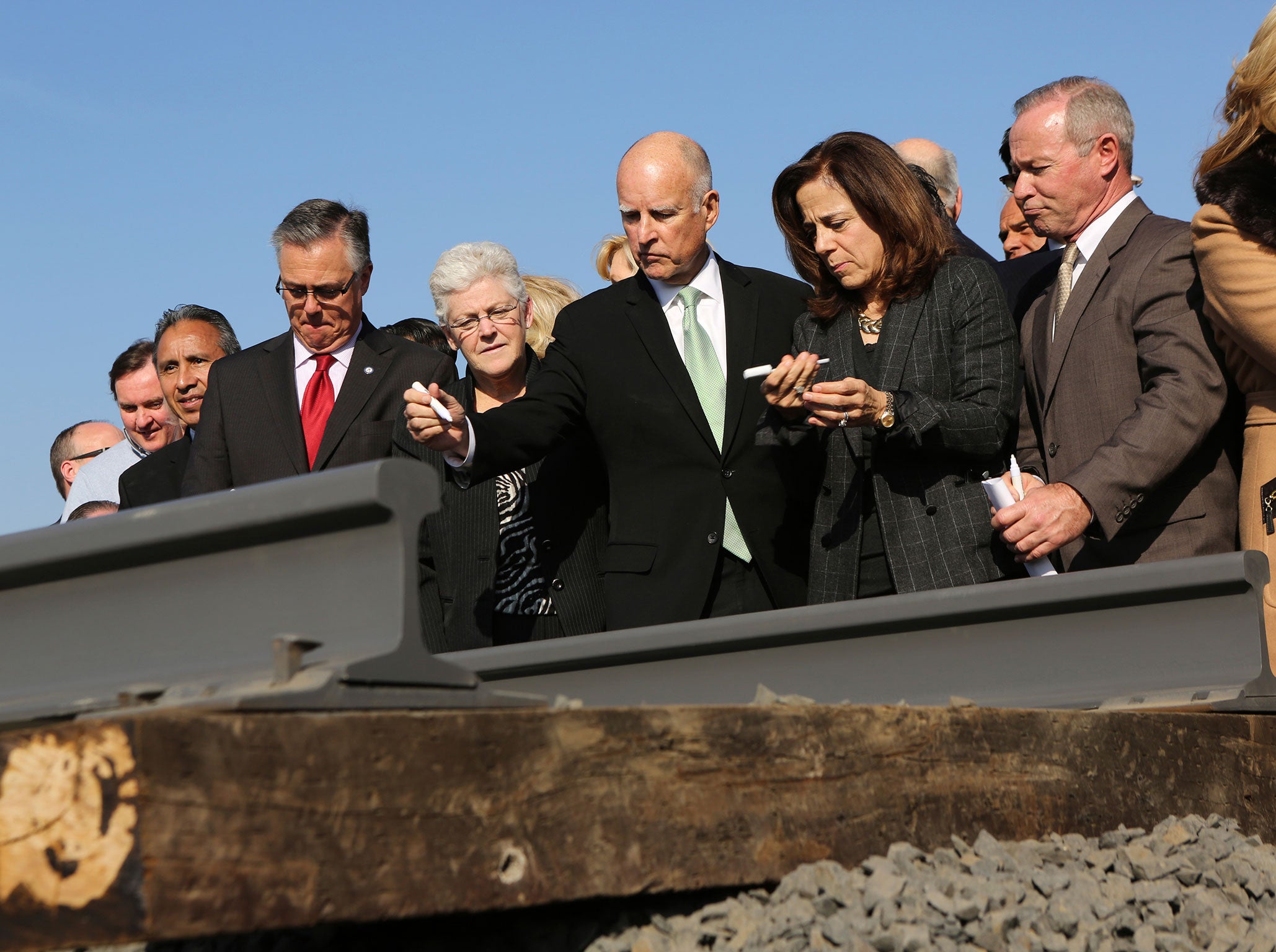Train to take you from Los Angeles to San Francisco in three hours
Ground broken on network estimated to cost $68bn

Officials have broken ground on California's high-speed rail project – a $68bnn network that could zip passengers from San Francisco to Los Angeles in less than three hours.
Construction of the first phase of the line with begin in the Central Valley, a 28-mile stretch from Madera to Fresno. In future years, the rail line will stretch north to San Jose and south to Palmdale and the San Fernando Valley north of Los Angeles. The entire network might not be completed until 2028.
But officials believe that it could spark other high rail projects across the US, which has been slow to take up the lead of countries such as France, Japan, South Korea and China.
The project has been engulfed in controversy. Some have said even though the nation’s first bullet train will be a quarter of the time it currently take to travel between the two cities by rail by making the trip in three hours, the train will still not be fast enough to attract sufficient customers. Others have said the price tag is too high.
Yet officials at California’s High-Speed Rail Authority says it is still cheaper than building dozens of new airport runways and highways to accommodate a state population that is estimated to reach 46m by 2035.

At the ceremony on Tuesday, California Governor Jerry Brown compared the rail line to the construction of the great cathedrals of Europe, which took generations.
“The high-speed rail links us from the past to the future, from the south to the north,” he said, according to the Los Angeles Times. "It's not that expensive. We can afford it. In fact, we cannot not afford it. All these projects are a little touch and go. You’ll have these critics say ‘why spend all this money’.”
Last year, transport two government officials in California, Brian Kelly and Mary Nichols, wrote in a newspaper article that the only genuine alternative to the high speed train was to invest up to $150bn to build 4,300 new lanes of highway, more freeways and hundreds of new airport gates and runways.”
They added: “This would cover large swaths of the state with concrete and asphalt.”
The Associated Press said the project faces challenges from Republican cost-cutters in Congress and Central Valley farmers suing to keep the rails off their fields. Others doubt the state can deliver the sleek project as promised, and worry it will become an expensive failure.
It said that taking the current Amtrak trains between east San Francisco Bay and Los Angeles now takes between 11 to 19 hours, and costs between $59 and $138 each way. That rivals the expense of a direct flight, which takes about an hour and 15 minutes in the air but more time getting to and from the plane.
By car, the journey takes at least six-and-a-half hours in the best traffic, and can cost about as much depending on the type of car, fuel and highway tolls The high speed train tickets will be similar to the cost of air travel, promoters say, and deliver people to central stations, saving more time and money.
Californians approved a nearly $10bin bond for the train in 2008, and in 2012 the Obama administration dedicated $3.3bn in stimulus funds. Part of the greenhouse gas fees to be collected under the state's cap-and-trade programme also will go to the train.
Bullet train systems make money in other countries, and California officials are banking on this one to entice private development around the stations to offset the costs.
Join our commenting forum
Join thought-provoking conversations, follow other Independent readers and see their replies
Comments